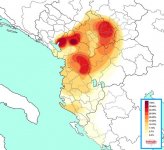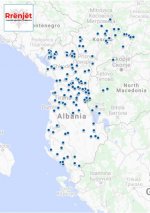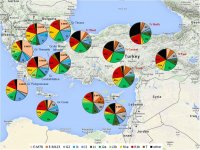Papayaseeds
Banned
- Messages
- 29
- Reaction score
- 10
- Points
- 0
- Y-DNA haplogroup
- J2b-L283
Nothing really surprising there. This sample is in the "South Asian" branch, so not under J2b-L283. Also, the currently oldest J2b-Z2432 sample comes from Bustan, Uzbekistan .
Thanks for clarifying , I did not know of this BMAC Uzbek sample, that is very interesting, there is a basal J-M102 living guy on Yfull from Uzbekstan after all, the ties to the region are indeed quite relevant.







